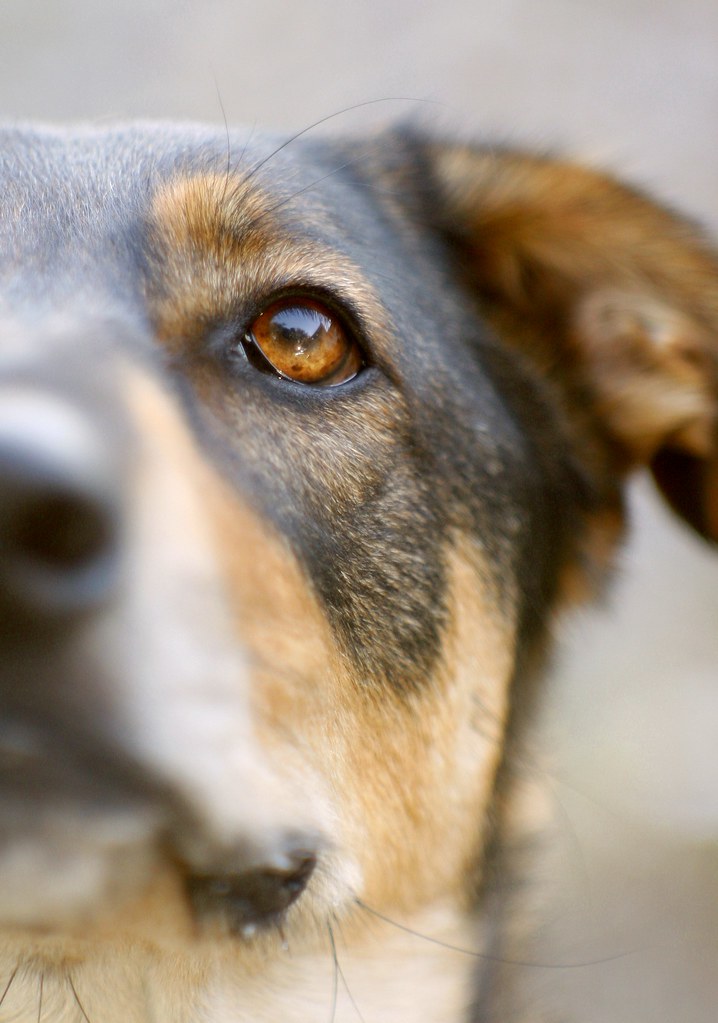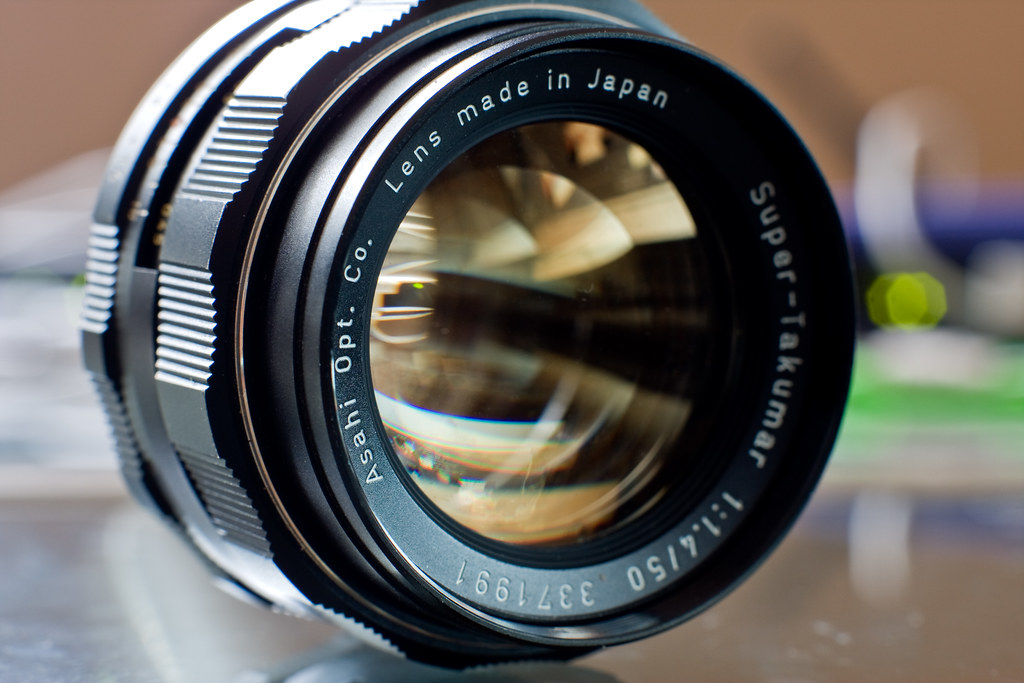Hopefully, if you're interested in getting started with adaptation of older lenses to a newer format, something in this post will be useful to you.
Which Lenses Can Be Converted
If you read my recent introduction to extension tubes (ha! who am I kidding, no one reads this blog) there was some talk about the flange focal distance, a measurement of the distance from the lens mount to the imaging plane, whether that be a digital sensor or film. All lenses designed for that mount (Canon EOS, Olympus OM, Nikon F, etc) have been designed to project a sharp image that exact distance, at all positions on the focus ring. Changing that distance even a fraction of a millimeter changes the focusing characteristics of the lens.
Of course, every company has determined what flange focal distance they want to use, and every camera system is different. See this handy chart for a list of measurements for most lens mounts out there. The key, when determining a lens's suitability for conversion to a different format, is to compare these values. The lens flange focal distance needs to be greater than the camera's flange focal distance.
 |
| Olympus OM Zuiko 135mm f/2.8 mounted to a Canon 5D Mark III |
On the other hand, taking space away is much more difficult. The Canon FD mount uses a 42mm distance, so in order to adapt those lenses to EOS, you'd need to reduce the space by 2mm, effectively bringing the lens 2mm farther into the camera than an EOS lens. But doing that runs the very real risk of interfering with the operation of the mirror. Not only would that make using the camera impossible, but you'd be running the risk of damaging it.
Now, there are some adapters that allow you to use lenses with a smaller flange focal distance, but out of necessity these adapters incorporate additional lens elements to correct for the delta optically rather than physically. Unfortunately, adding new glass elements reduces the quality of the output, similar to using cheap teleconverters. Plus, they tend to be more expensive due to the increased complexity.
Focusing Considerations
There are some pitfalls and things to consider when using an adapted lens, and focus is one of the major ones. Of course, adapting any lens from one format to another is going to cause you to lose autofocus. Most lenses that are adapted are already manual focus to begin with, so no big loss there. The main concern is the viewfinder of the camera you're using. Old manual focus SLRs had big, bright viewfinders, usually with a center split image rangefinder and microprism collar for extremely accurate focusing. Autofocus SLRs no longer have that at all, and especially in the case of crop sensor DSLRs, you may notice that the viewfinder is darker. This all makes critical focus much more difficult. Of course, this is largely mitigated now by the use of "live view" to focus. From the screen, you can zoom in to a point, focus carefully, then zoom out to compose and shoot. It's a slower process and it takes some getting used to, but it can be done.
Older digital cameras, like the Canon EOS 30D that I had back in the day, didn't have a live view mode at all. For that camera, I was able to buy an aftermarket focus screen that increased the viewfinder brightness and added a rangefinder/microsprism spot to the center. Sadly, that company is no longer making screens, but you might be able to find something you need at a site like FocusingScreen.com or by checking eBay. After a quick look, I was able to find one for my Canon EOS 5D Mark III. Even though live view does the trick very well, I may consider getting this screen. It's far easier to focus through the viewfinder compared to taking the camera away from your eye, pressing the live view button, zooming in, focusing manually, zooming out, recomposing, and shooting.
 |
| Focus precision with a Jupiter-9 85mm f/2.0 |
Then you've got the AF-confirm adapters. These are adapters that have a chip attached to them that interfaces with the camera and attempt to provide that focus confirmation beep that you get with an autofocus lens. So you would slowly rotate the focus ring of the lens until you hear the beep. In theory, that means you're in focus. In reality, I've never found these to be particularly accurate. There ends up being a range where the beep occurs, not at the one specific point of perfect focus.
One final option is to just eyeball it in the viewfinder. But for me, even with the relatively bright full-frame 5D3 viewfinder, I screw it up more often than not.
Exposure Considerations
You're going to lose in-camera aperture control as well. With a lens defined for your mount, it will stay at a wide-open aperture regardless of what you have it set to, until the moment the shutter activates. Then it stops down to the selected value and opens back up after the shutter closes. This is important for a number of reasons. Accurate autofocus prefers wide open apertures, viewfinders are brighter when the lens is wide open, and exposure metering is more accurate.
When you have an adapted lens though, the aperture is no longer controlled by the camera. You need to set it manually via the aperture ring on the lens (if your lens doesn't have an aperture ring, you may only be able to shoot wide open). In most cases, the adapter includes a component that causes the aperture blades to always be set at the value on the lens. So as soon as you set it to f/8 for example, the blades inside are set at f/8.
When you have an adapted lens though, the aperture is no longer controlled by the camera. You need to set it manually via the aperture ring on the lens (if your lens doesn't have an aperture ring, you may only be able to shoot wide open). In most cases, the adapter includes a component that causes the aperture blades to always be set at the value on the lens. So as soon as you set it to f/8 for example, the blades inside are set at f/8.
The downside to this behavior is that now your viewfinder is much darker and your exposure values could be off by a stop or more. So what you need to do is open the lens back up to wide open, focus carefully, meter the scene, do the exposure calculation in your head for the new aperture value (or use exposure compensation if it goes that far), then close down the aperture to your desired value and shoot.
If you use live view to shoot, you thankfully don't have to worry about this -- it does a fine job of compensating for the smaller aperture and metering correctly. It's only an issue when using the viewfinder.
Why Am I Doing This Again?
If you already shoot with a full complement of professional quality glass, I admit that you may not find much benefit to this. Personally, I have a handful of Canon L lenses so I don't do this as much as I used to.
On the other hand, not all of my L lenses cover what some of my older lenses do (for example, I have an Olympus OM 100mm f/2.0, and my Canon 70-200L only opens up to f/2.8) so there are times when these old lenses suit my needs better. Also, these old lenses are significantly smaller than the modern counterparts since they don't have any electronics, focusing motors, etc. I can actually carry some of them in pockets. This makes me far more mobile than I would be with a big backpack.
 |
| Asahi Super-Takumar 50mm f/1.4 |
If you are shooting with a kit lens or other consumer grade glass, you'd be shocked by the abilities of some of these older lenses, for prices quite a bit lower than the modern lenses. For example, the modern Canon EF 50mm f/1.4 runs about $350. On the other hand, I have two Olympus OM Zuiko 50mm f/1.4 lenses and one Asahi Super-Takumar 50mm f/1.4, and they're all going for around $50 to $75 on eBay right now.
Some lenses are just plain unique, too. The Jupiter-9 85mm f/2.0 is an old Russian lens. Not only is it fast (and very sharp when stopped down a little), but wide open it presents an almost dreamlike quality while still resolving detail nicely. And with 15 aperture blades presenting a nearly perfect circular aperture, the bokeh quality is out of this world!
If you're shooting on a budget, you'll be the one getting the most out of this. The same goes for those people that already have invested in older, manual focus lenses for their old SLR system and now that they've upgraded, the lenses are sitting unused.
If you're shooting on a budget, you'll be the one getting the most out of this. The same goes for those people that already have invested in older, manual focus lenses for their old SLR system and now that they've upgraded, the lenses are sitting unused.
Or... maybe you're interested in slowing down, re-learning (or in some cases, learning for the first time) the basics. Digital photography makes sloppiness easy. Autofocus, auto exposure and the ability to fire off a hundred shots at zero cost makes it easy to just "spray & pray". Then you just need to cherry pick the best of the lot, and you're done. Maybe you want a reason to slow it down a little, and to bring some of the effort and thought back into the process. Your photography can only improve by doing this.
Whatever your reasoning, if you're interested in trying it out, I'll be reviewing the lenses that I personally have in subsequent blog posts, which hopefully will help one or two people decide what to look for and what to avoid. If you have any questions, corrections, etc. feel free to leave a comment for me and I'll do my best to answer if I can.
Good luck!


No comments:
Post a Comment